60 cm x 70 cm finished
Silk organza, silk kimono lining, printed silk, silk habatoi, silk satin
60 cm x 70 cm finished
Silk organza, silk kimono lining, printed silk, silk habatoi, silk satin
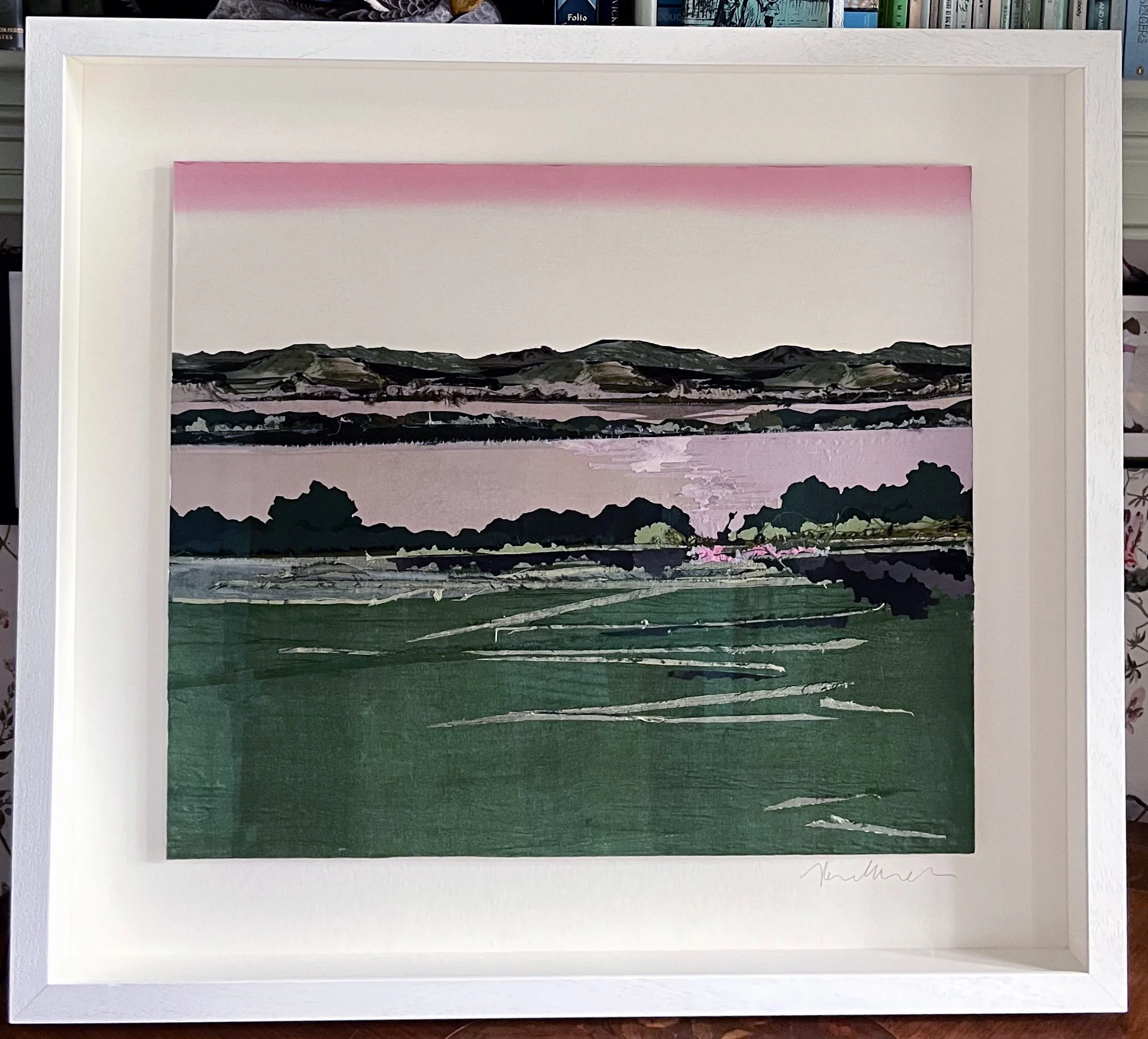




Pink and Pleasant- I started this picture last October… today finished.

I find the process of making these pictures increasingly impactful; they all progress independently from a seasonal colour palette and journey progresses with all the seasons simultaneously. They can take days/ weeks / or months - this series is appearing relatively quickly.


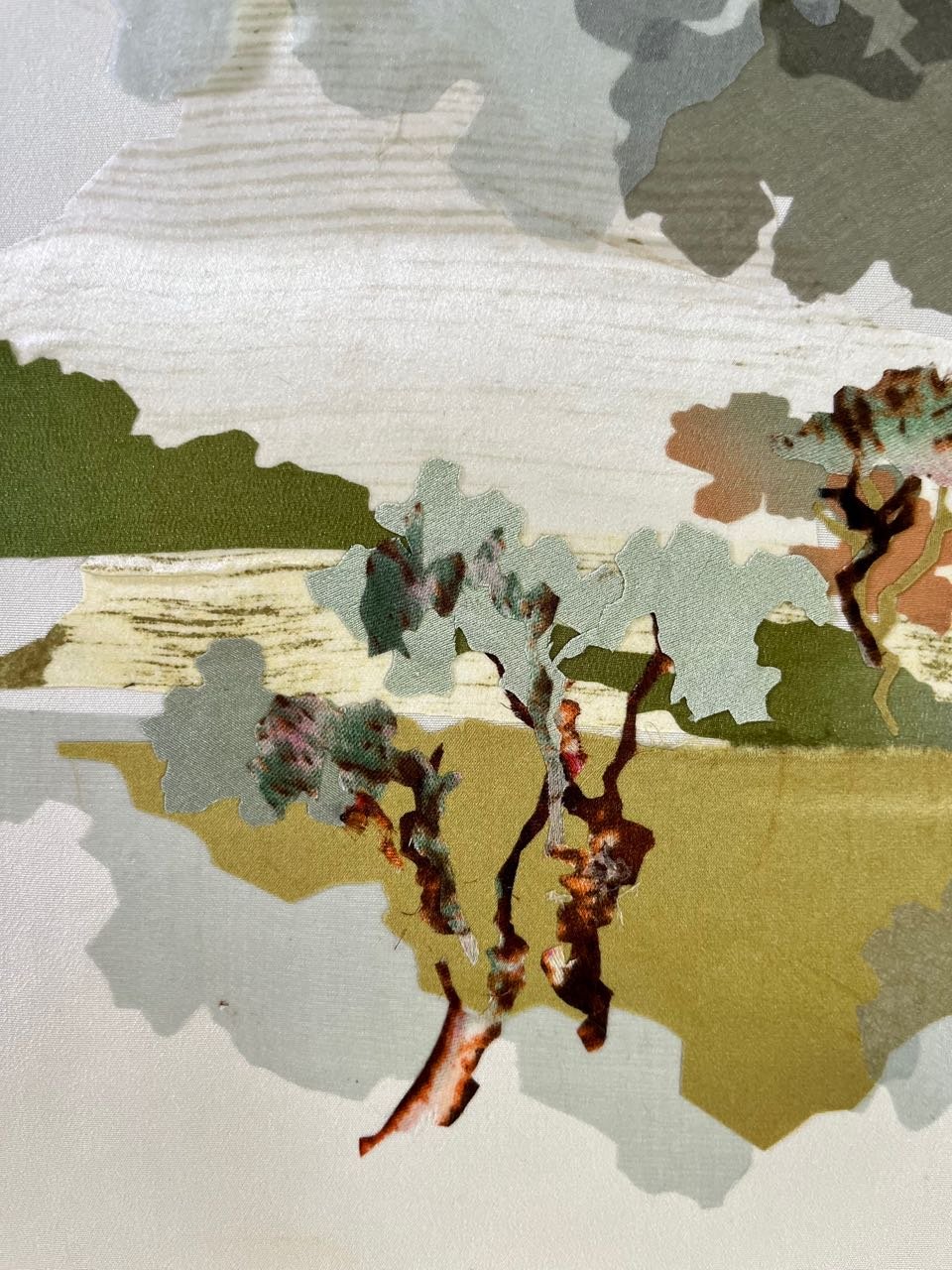
Not really work in progress, but a fabulous experience which was utterly inspirational.
In my last year of university (Exeter - English and drama), in the late 80s, I wrote my dissertation about David Hockney’s stage design - integral was his 1975 Glyndebourne production of The Rakes Progress inspired by Hogarth’s series. I had only seen the designs in 2D, but on Friday, for the first time I saw it in real life and met the designer himself - it didn’t disappoint- and nor did he - it was an amazing production- and he wonderful. A magical experience.

Spring, autumn and winter in progress…..
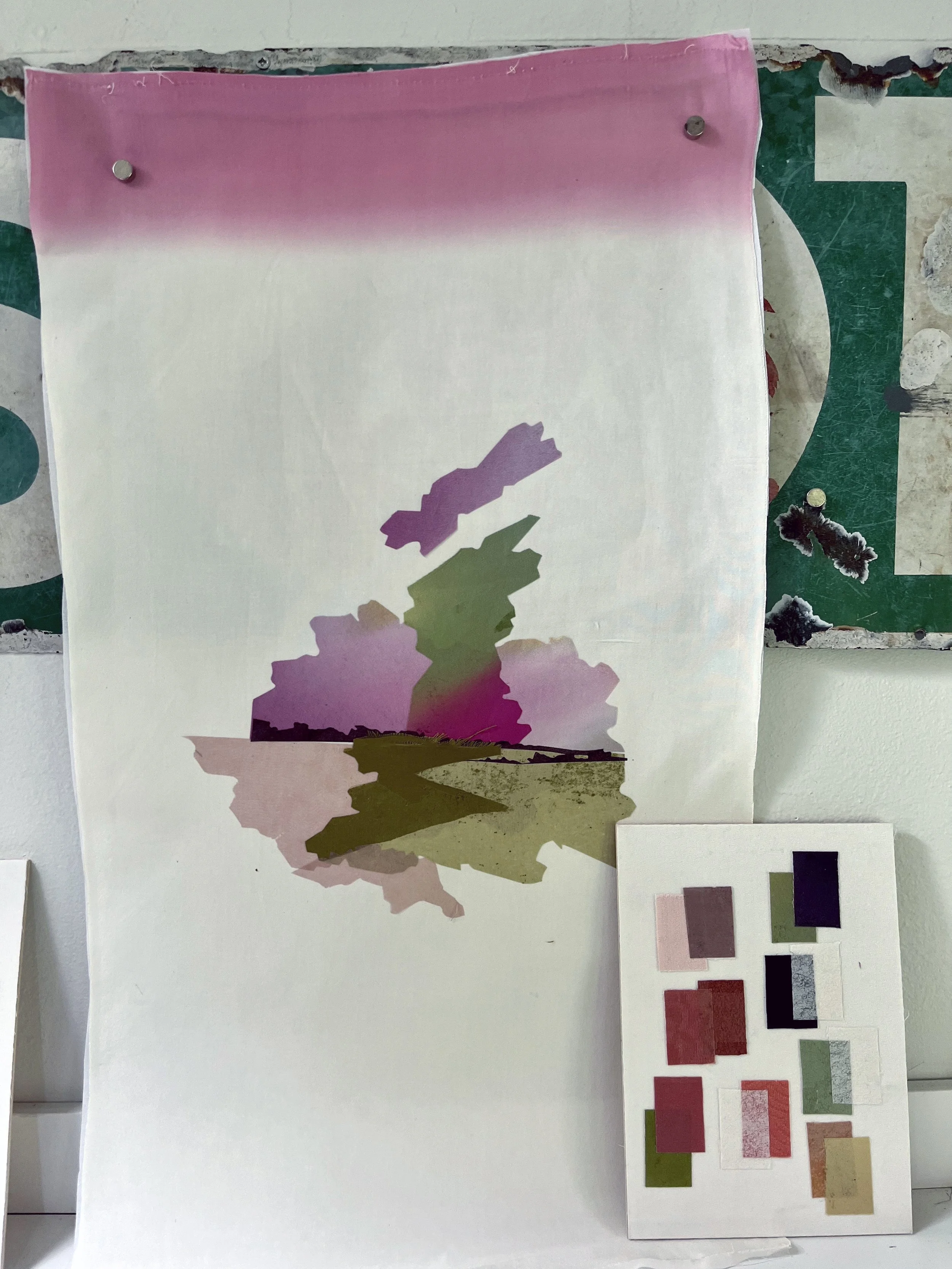
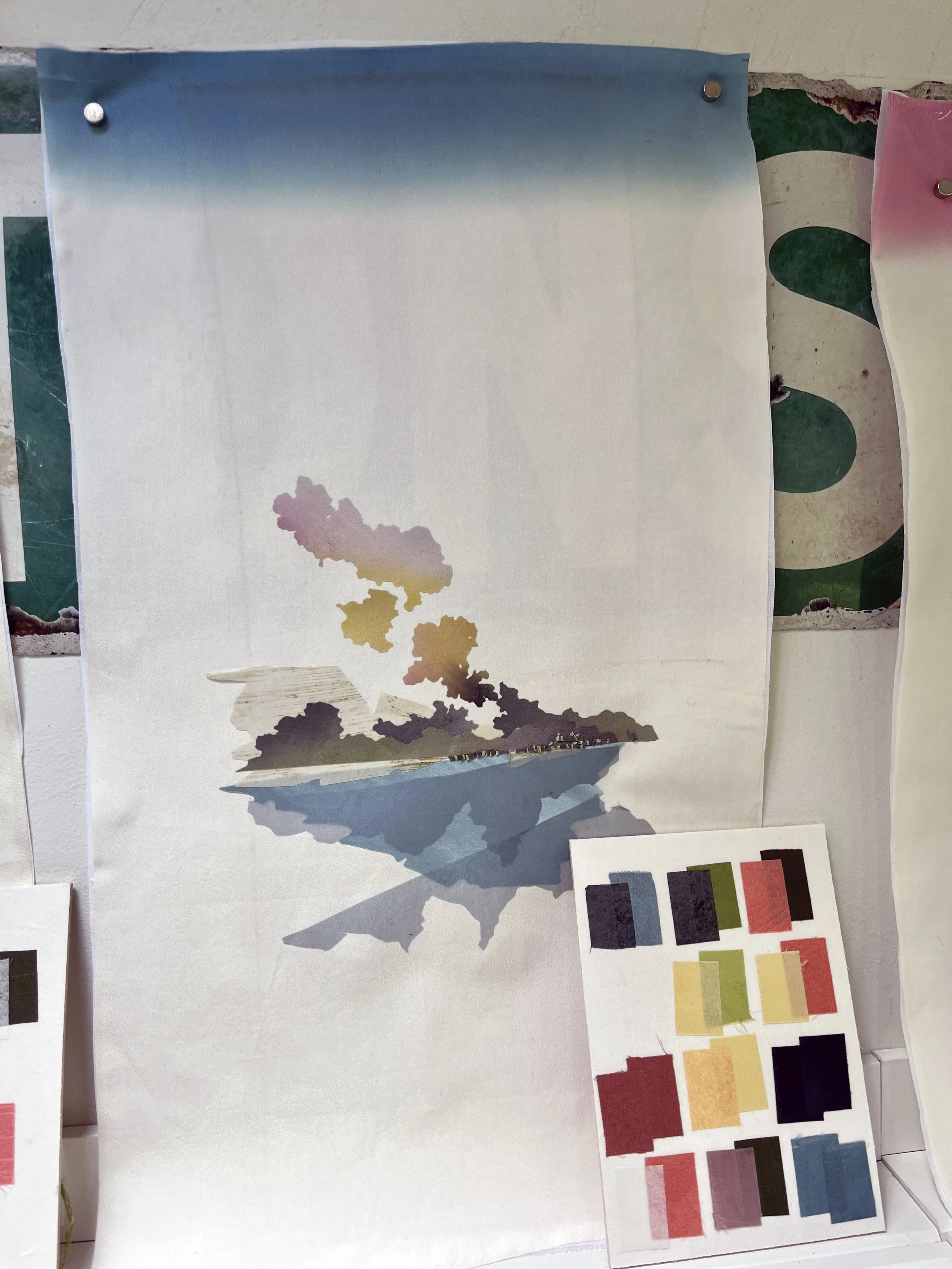

Day 1 / spring, summer, autumn and winter selecting colour combinations






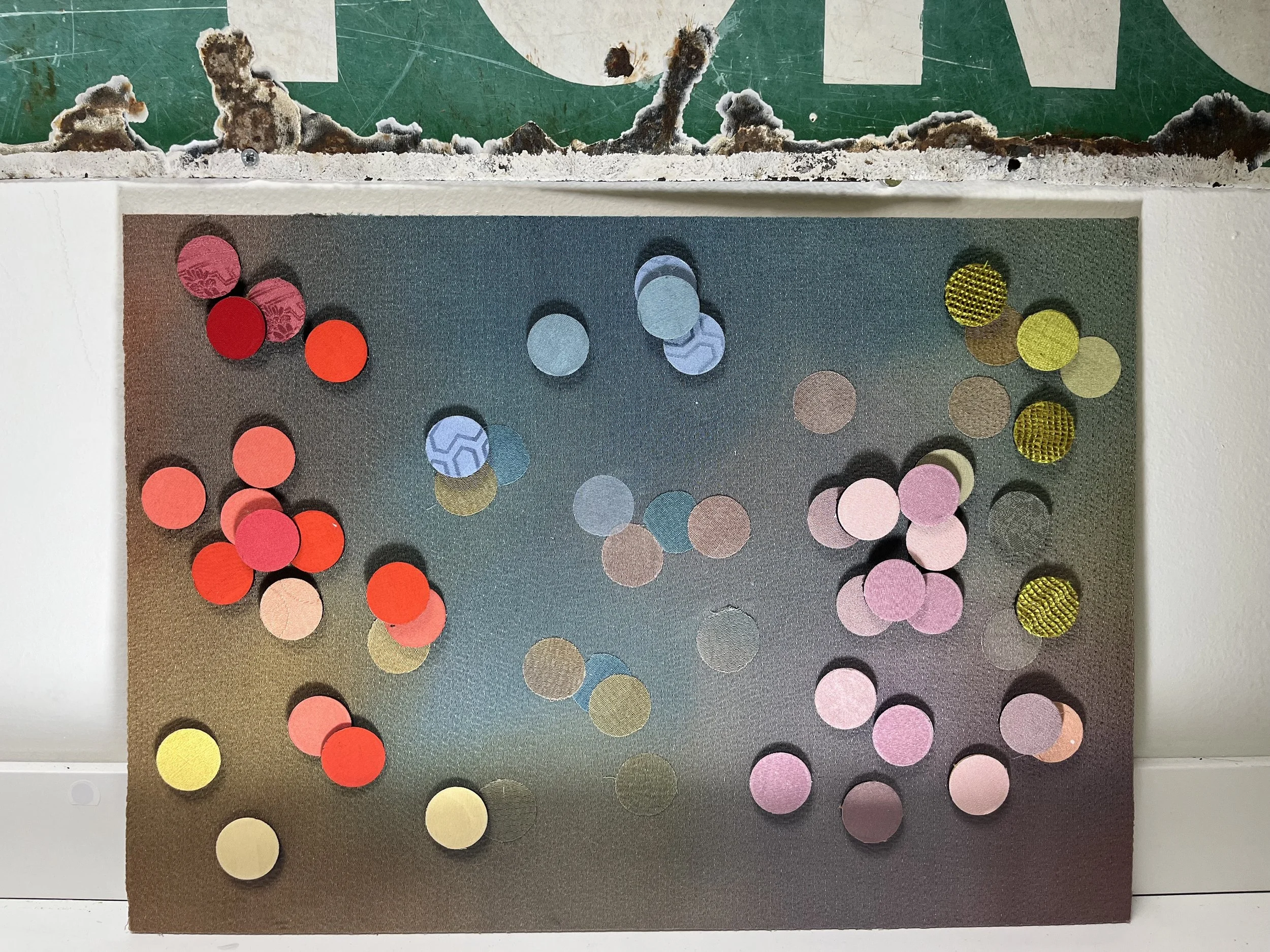
almost finished
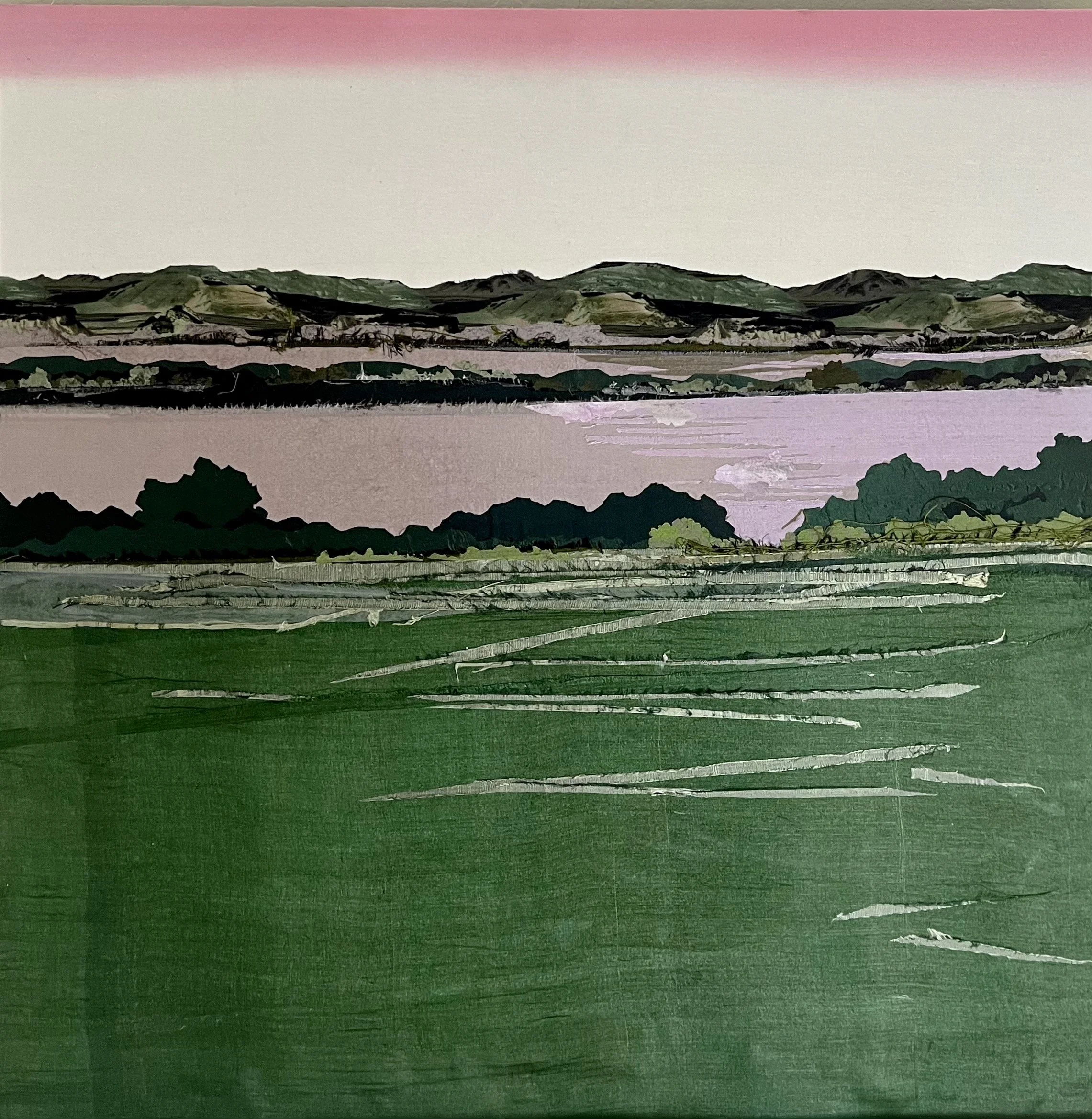

Looking forward to show at The Affordable Art Fair / New York in September with The Cube Gallery starting to get ready……
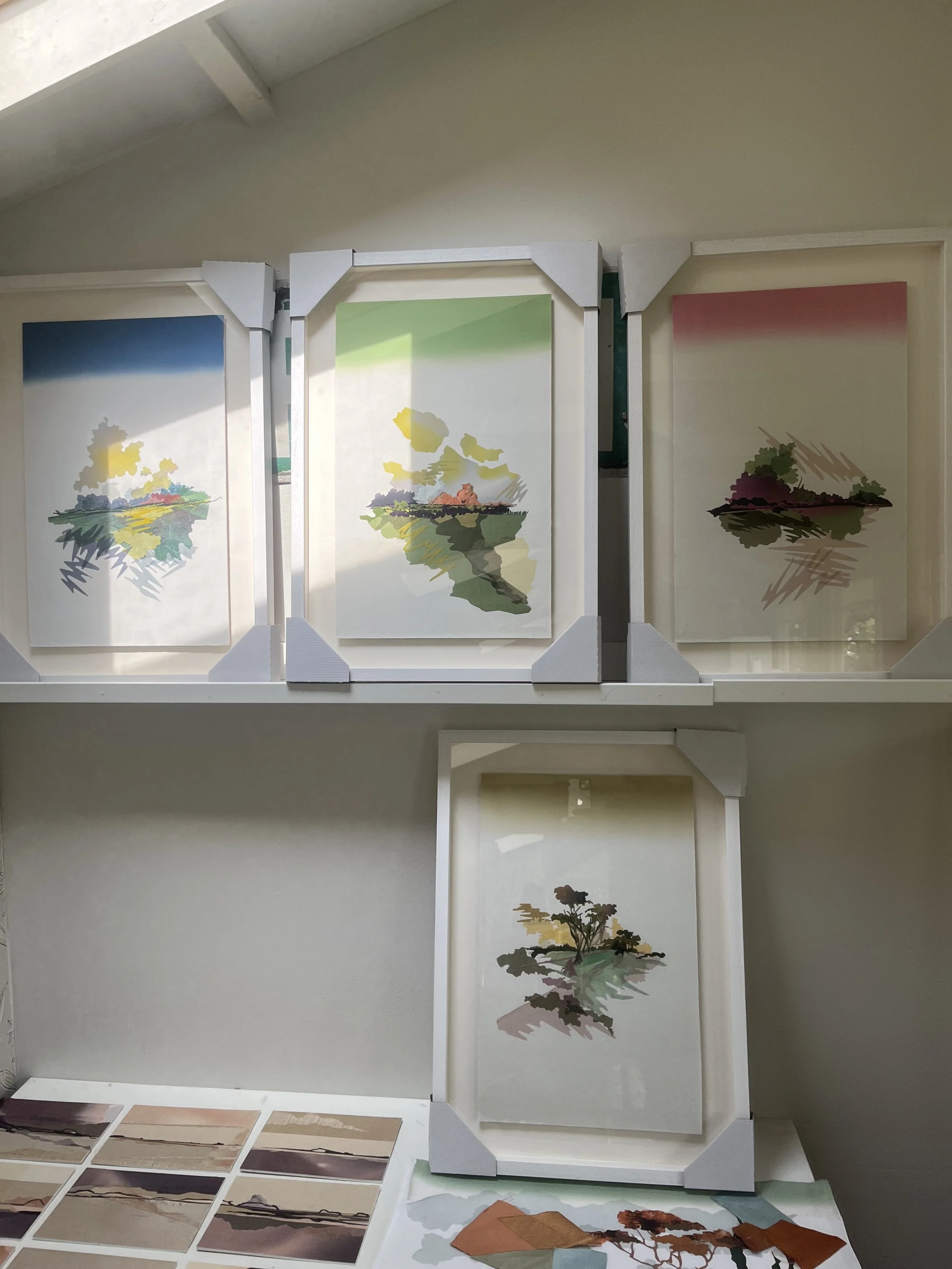
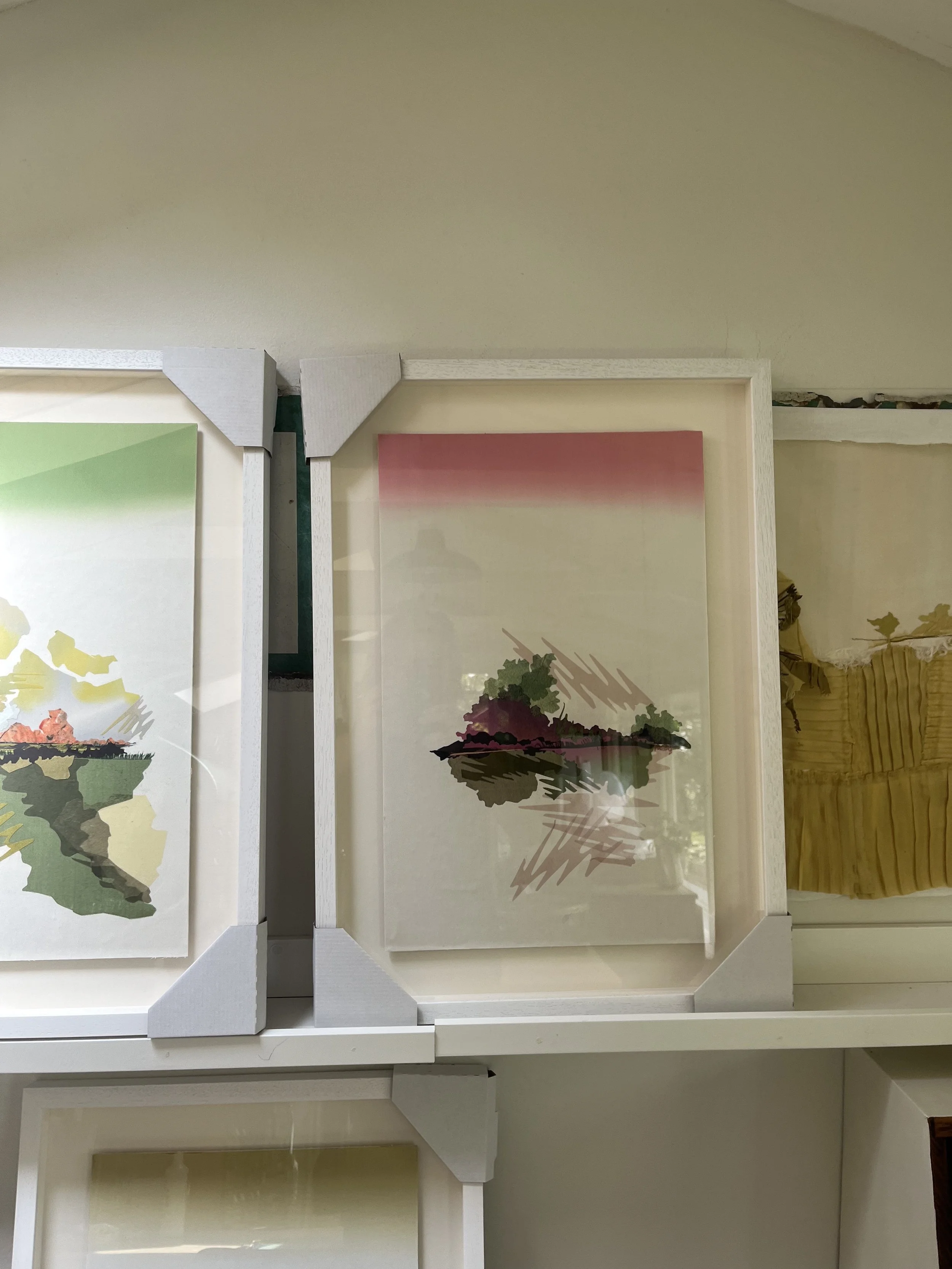

The work I am making at the moment explores value. The value of stuff; of materials, of memory and, perhaps, of art and the creative process. The pictures in the Botanical Conservation Series (with butterflies) necessarily attempts to quite literally reframe our view of specific dead plants and butterflies. The plants and butterflies lived and died- unique natural existances and as such cannot be replicated. The collection of plant labels is finite, a collection from a botanical garden at a specific time and they represent specific (now dead) plants. The collection of butterflies is one which was made in 1976 at a particular place in Nigeria and cannot be added to (there are around 40 butterflies, but their fragility and age means that they are not robust and some have deteriorated). So, the pictures become unique and authentic and cannot be fabricated from other materials. I am a facilitator - reframing their worth. My intention is that these pictures go some way to remind us of their brief lives. Yet they are so much more than the value of their constituent elements - they are the result not just of a lengthy creative process but also experiencing, and processing, grief and loss. They are only just finding their way.
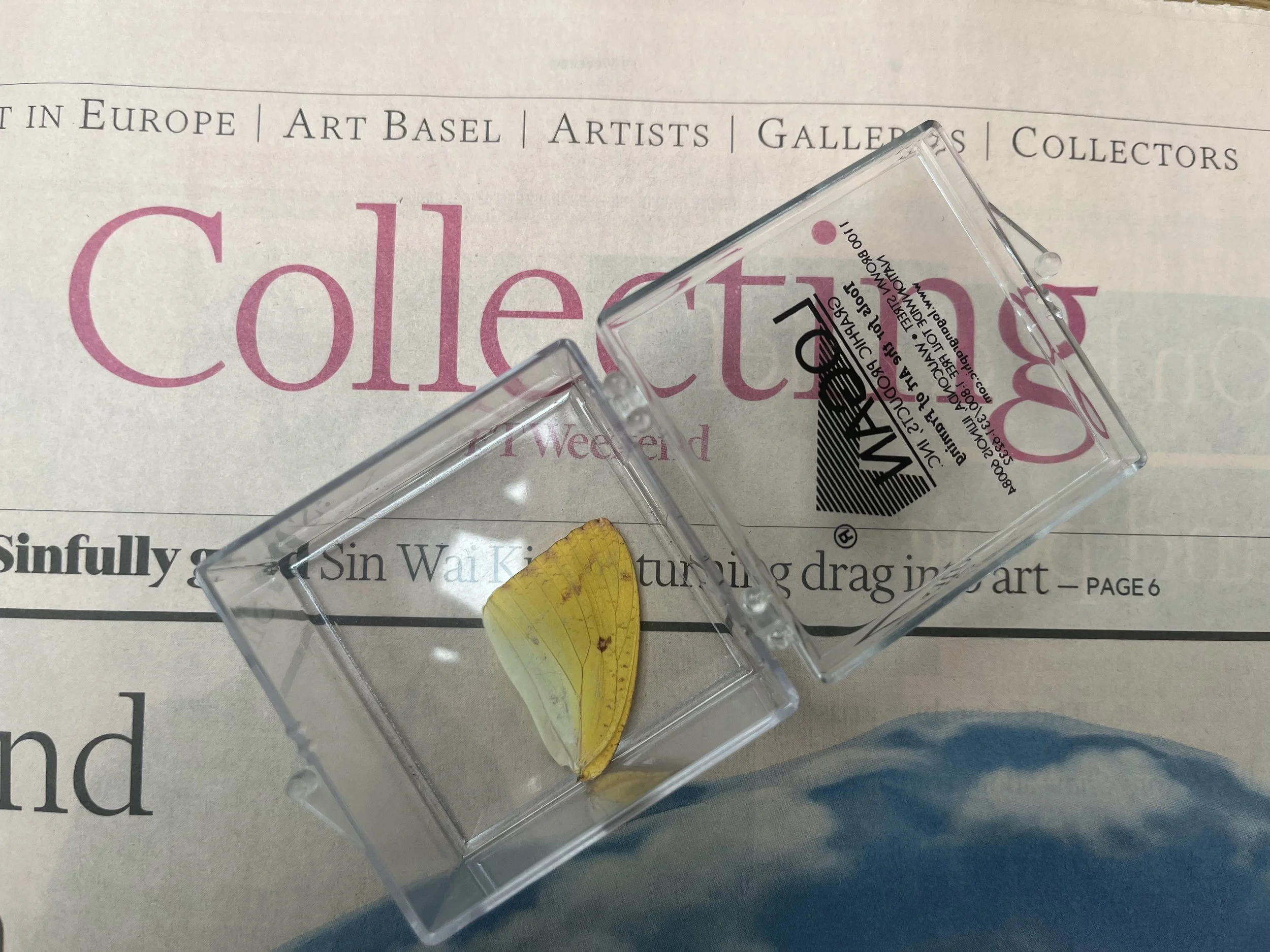
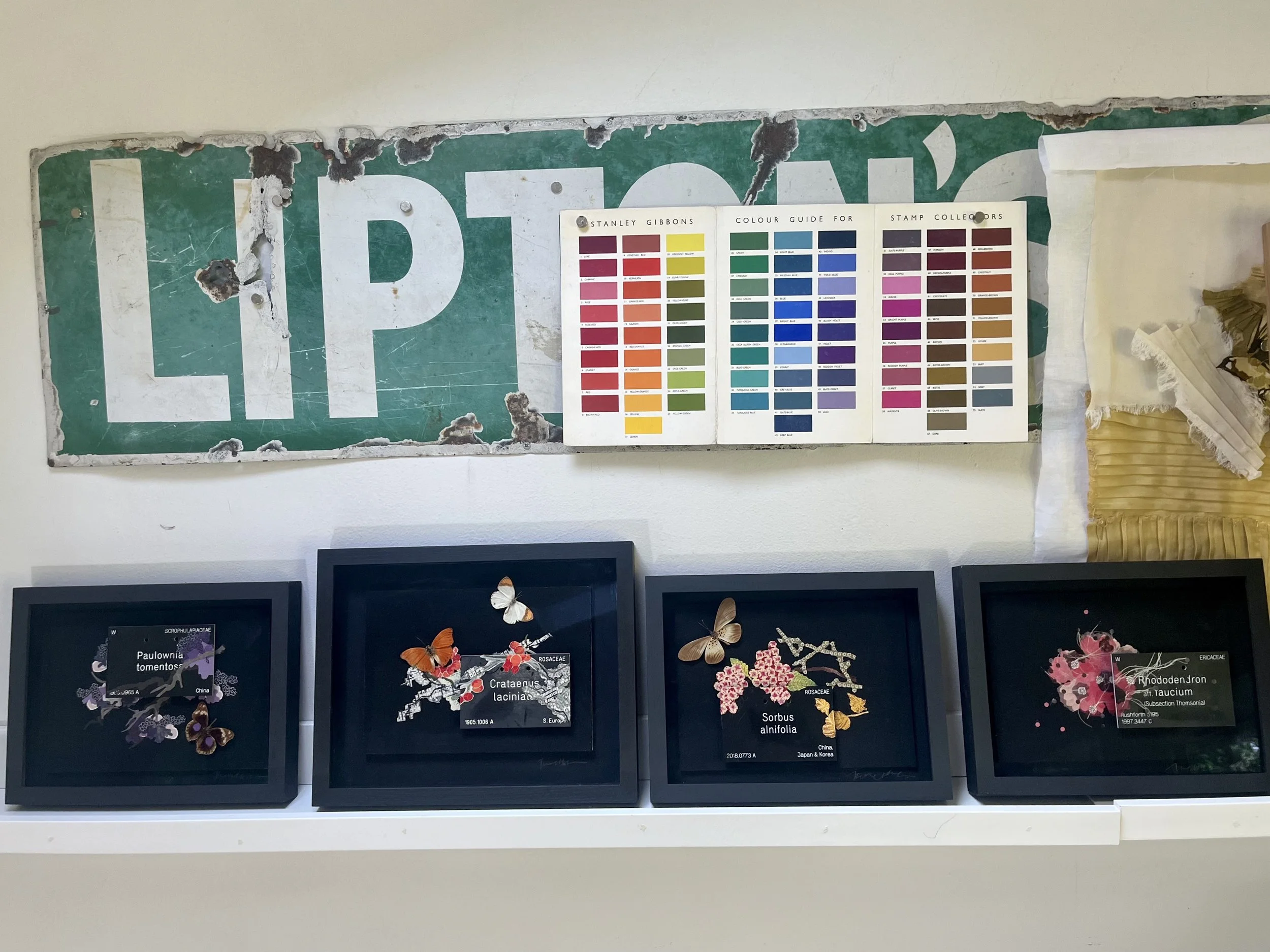
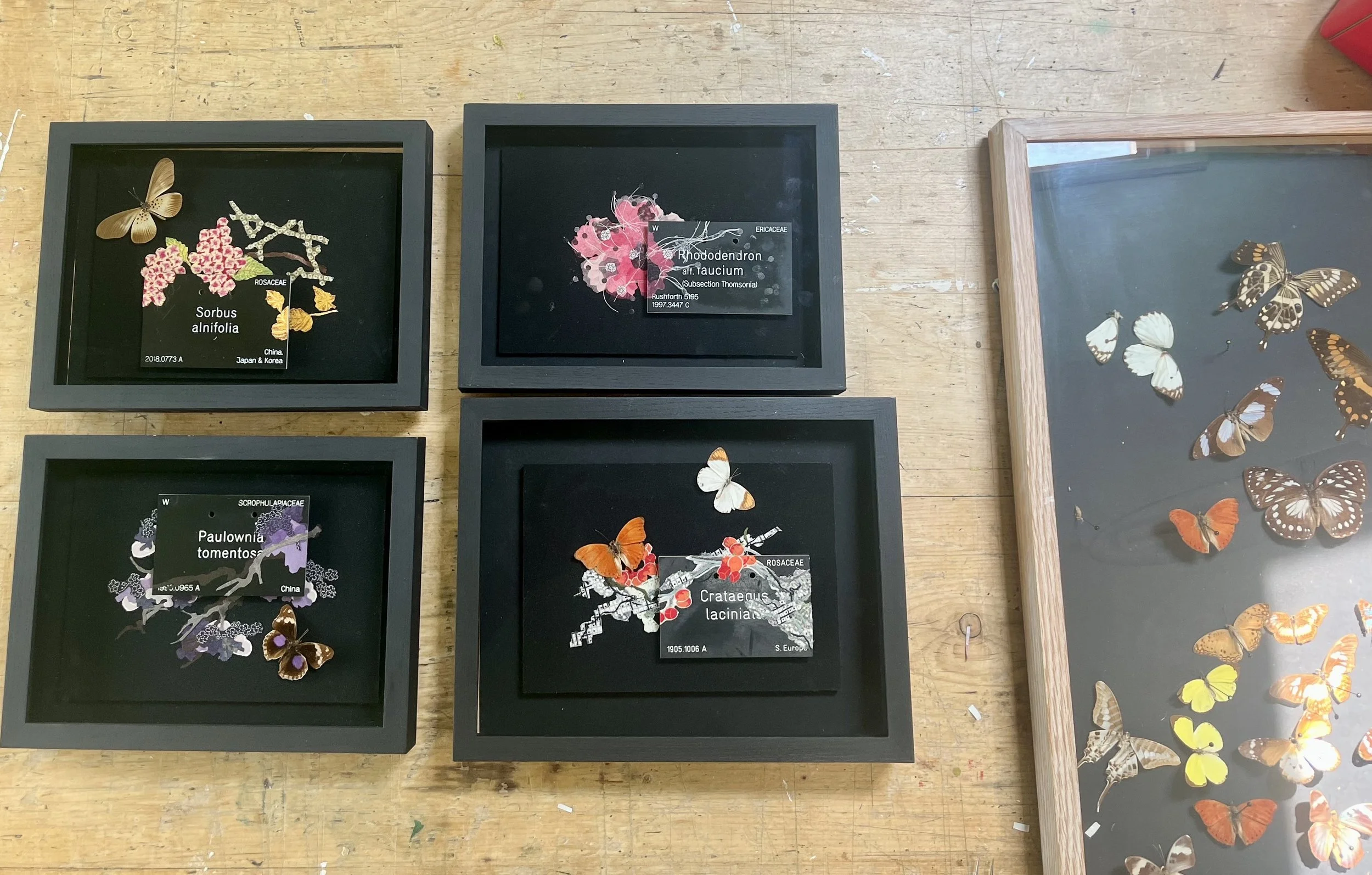
I noticed Otto Marseus van Schrieck ‘s still life in the Fitzwilliam Museum in Cambridge; he used real butterfly wings on his painting which over the centuries (it was painted in 1673) have degraded and now leave the ghosts of butterflies without their original iridescence. The capturing, painting and preserving of a once live thing and how it is presented to us now seems particularly relevant to this series. A really interesting blog about how he painted using this technique here by Hamilton Kerr students at the Fitzwilliam Museum.

In 1976 my father my father spent about 6 months helping to set up a medical school in Ile- Ife in Nigeria. Times were different then and he collected butterflies which he brought back in tupperwear boxes between sheets of loo paper, and remained under his desk until the 1990s when I found them and (very badly) tried to set and frame them. While working on the ideas of transience, beauty and fragility on my siskin piece, I realised just how resonant these butterflies are to my current work on the dead plants I am immorialising with the Botanical Conservation Project, and so have decided to incorporate them into the image. All in progress - but here the butterflies and a first picture. Careful framing is crucial!
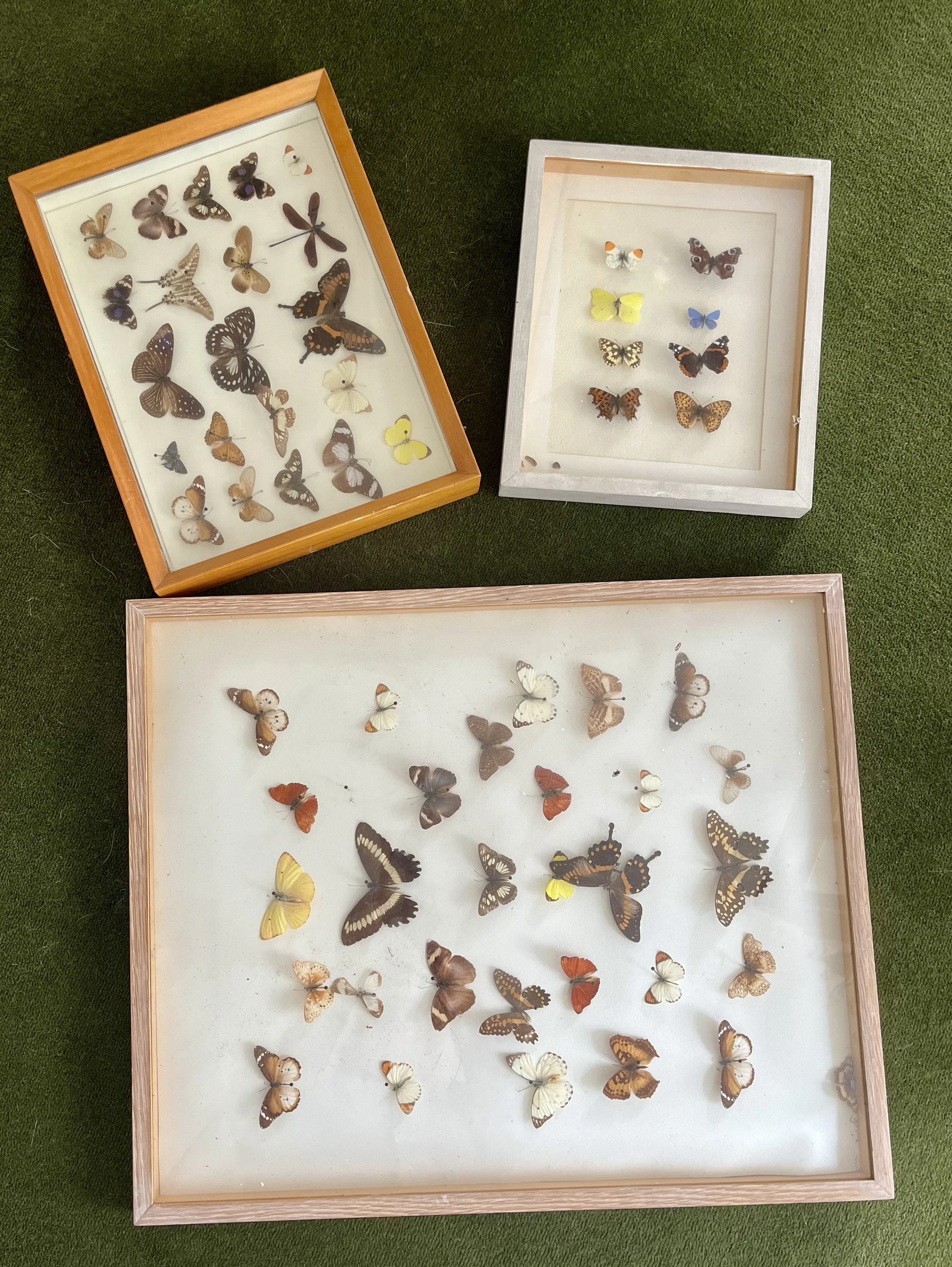

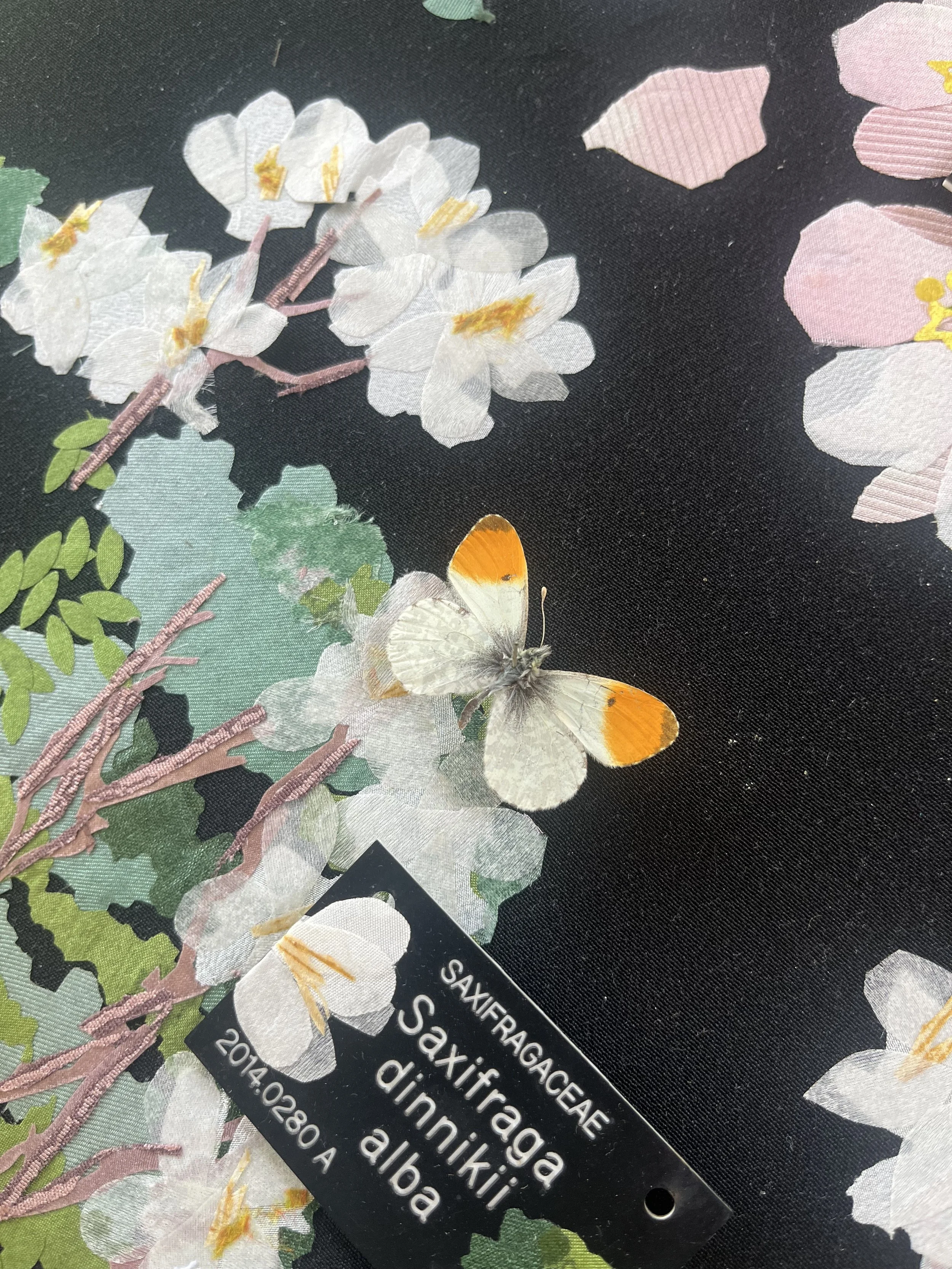
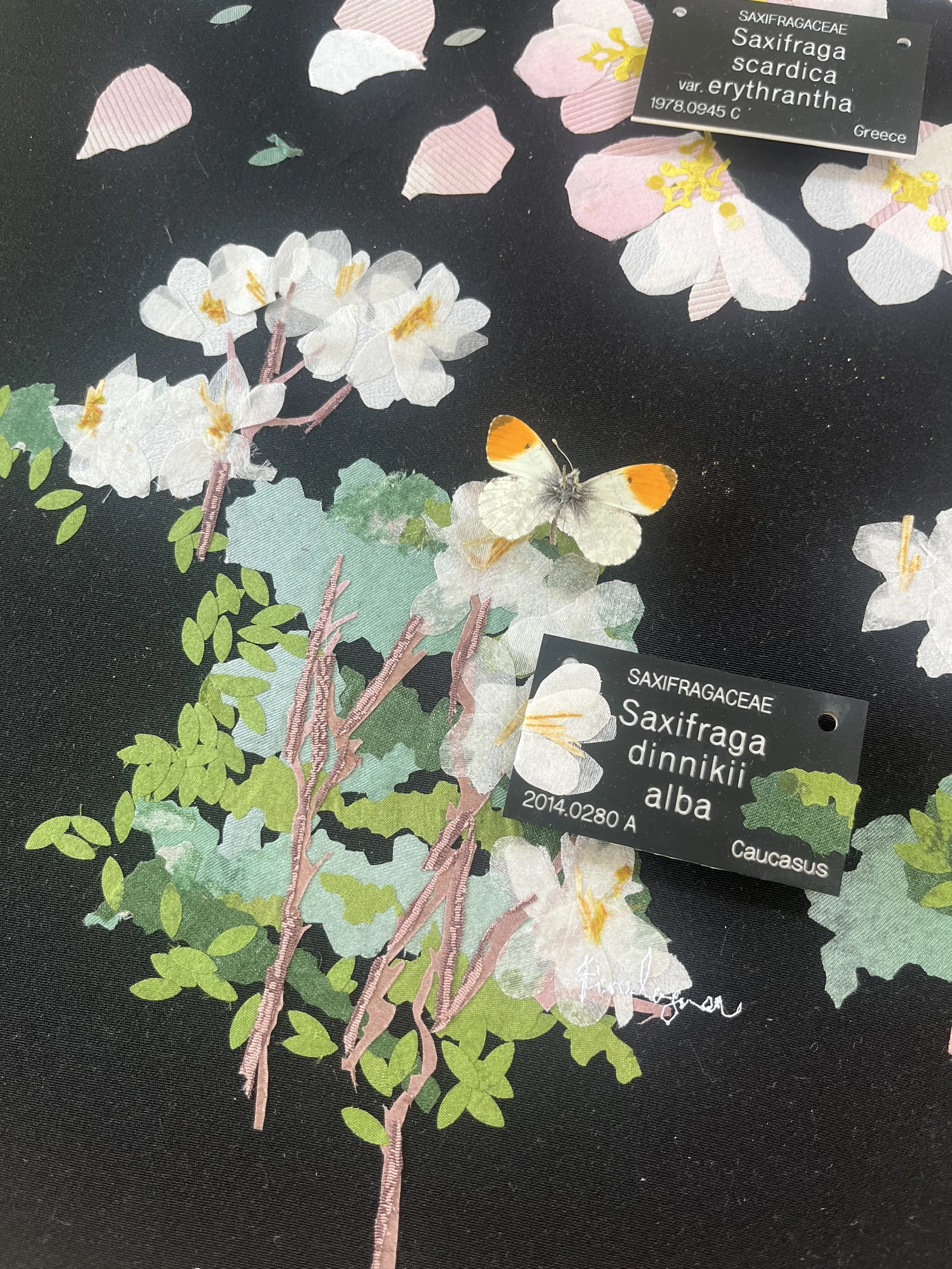
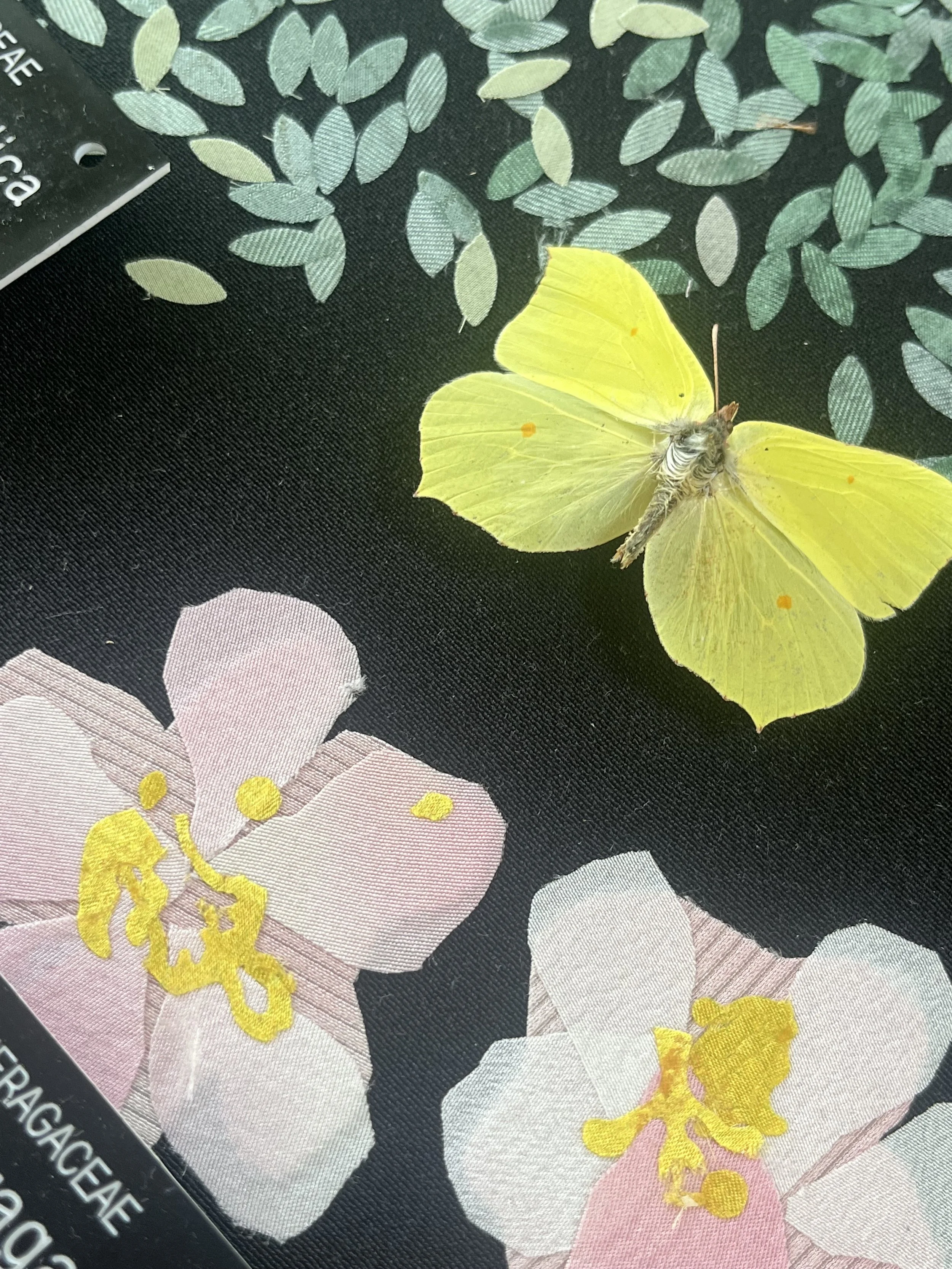
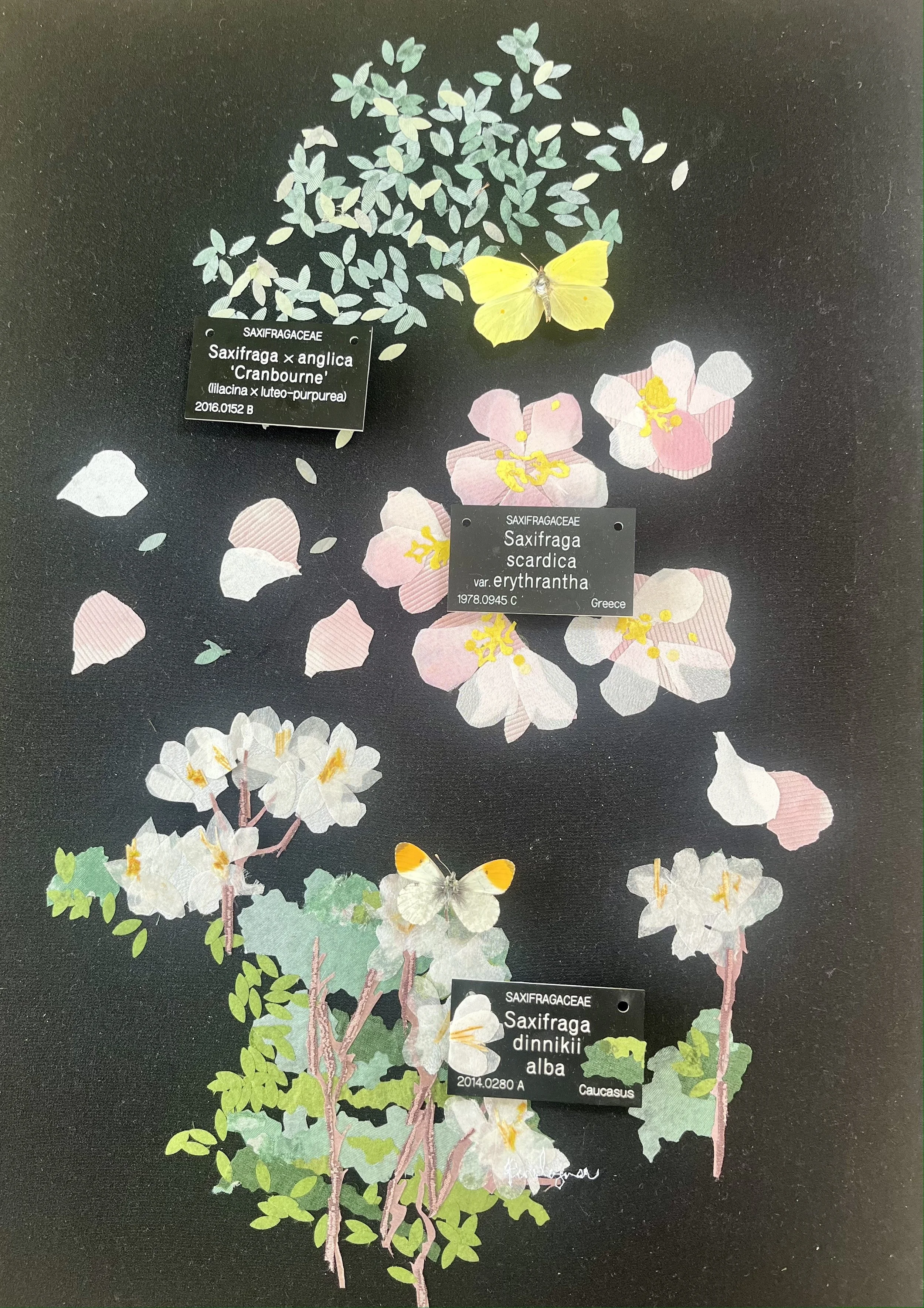
I haven’t decided yet how/ where to show these pictures, but they are developing into a set waiting for a place. When I was in Cambridge a week ago, I saw a beautiful Caneletto of the Basilica …. reminding me to return to these.
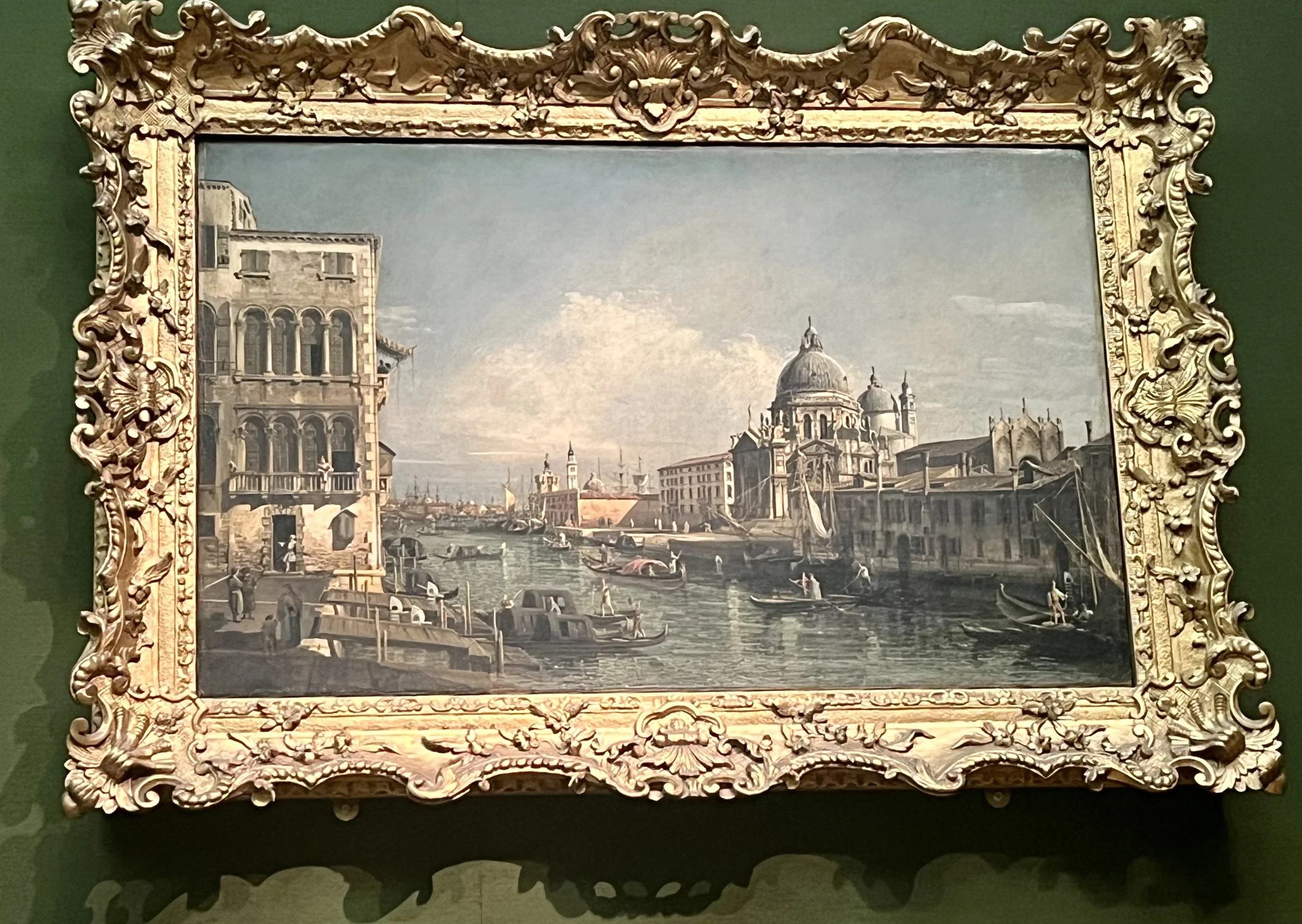

It’s been a strange time processing grief and the end of an era. My father died (peacefully just before he was 92) in December, and with the processing of that has come the simultaneous challenge of losing the house I was born in. This piece of work aims to consider the life and meaning of things as well as the beauty, fragility and transience of the beating heart life (both human and of our natural world) .
About 5 years ago my parents came to lunch. My father was delighted with his offering - a dead siskin he had found in his garden. It was beautiful and tragic- perfect and yet ‘over’. I photographed it and we buried it in my garden, and pondered on its short life. It was typical of him - he delighted in nature and spent a lifetime watching and marvelling at birds, but I too knew that it was an important gift and I would at some stage respond to the offering.
A month ago, I inherited a standard lamp with a yellow silk shade that had in turn been inherited by my parents. It had never been wired to work in England (it came from Austria, my step grandfather’s family) so I decided to rewire it and recover the shade to give it a life and place to be in a new space. Who would remember the lamp, the house, the bird, us?
The work is a musing on these things - using the yellow silk shade from the original lamp and the image of the siskin (now free) to create a new permanent house for these thoughts.
The intention is to eventually use all the pieces of the shade, and the brading in some way ……. all in progress.


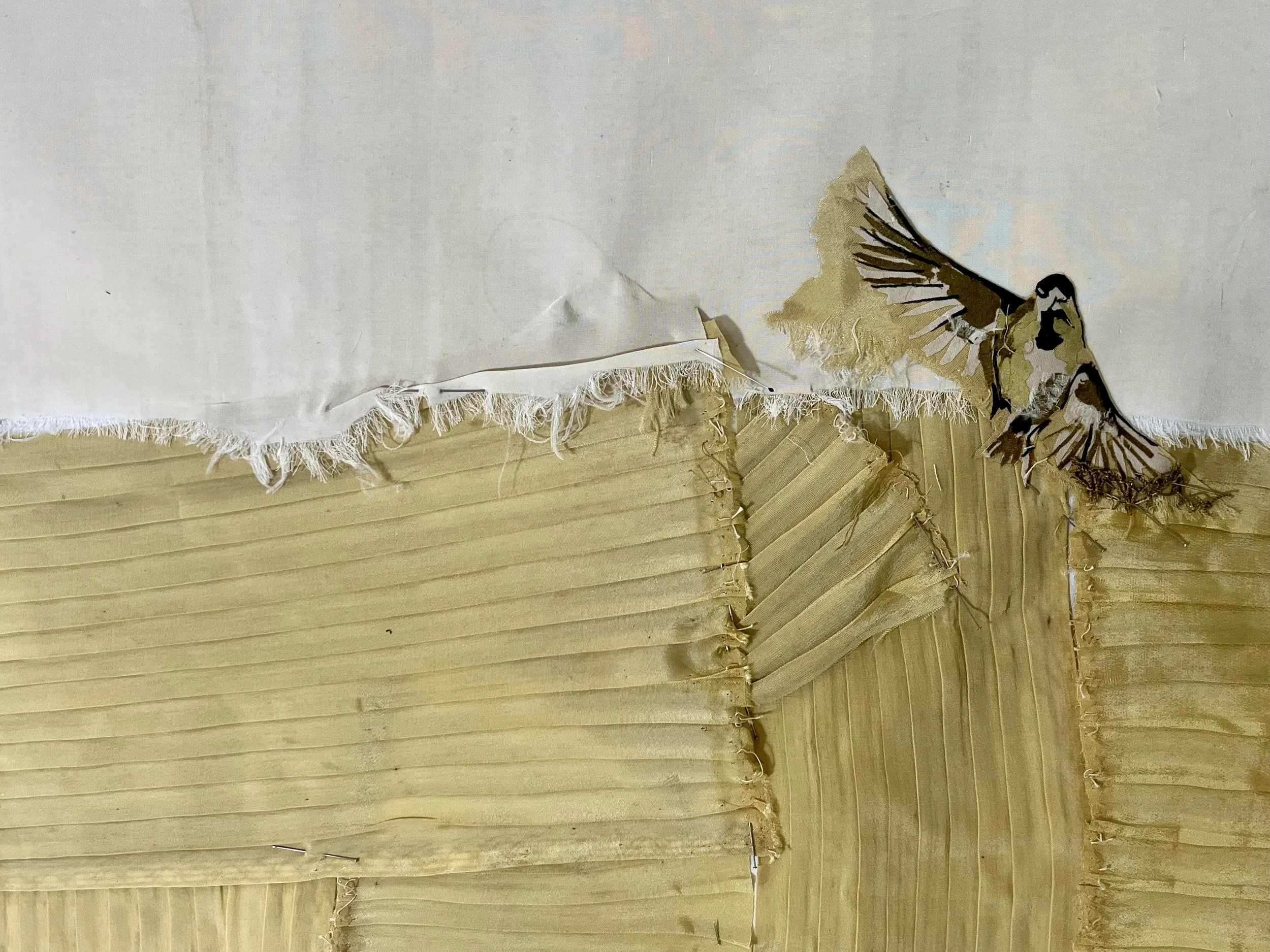
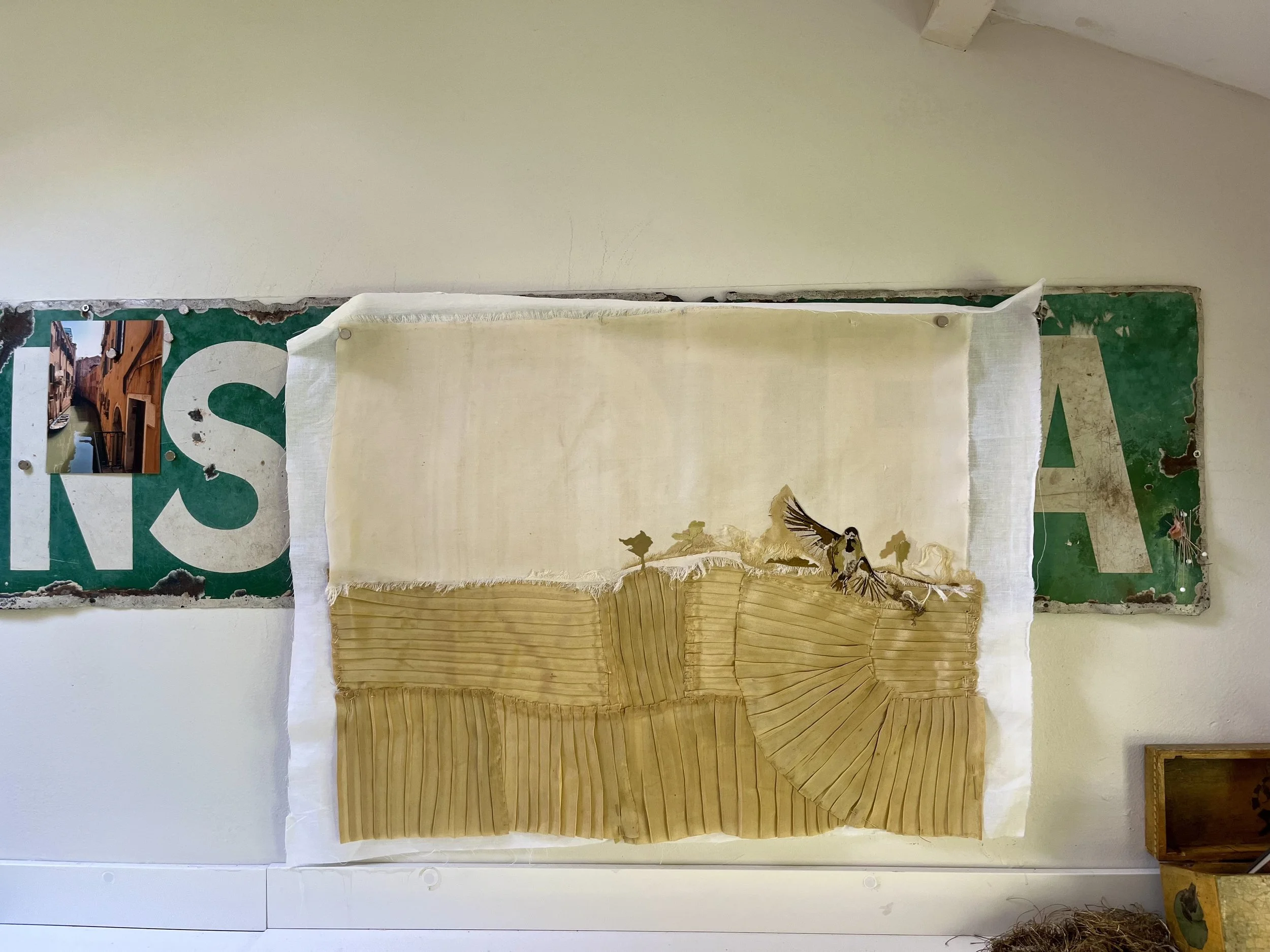
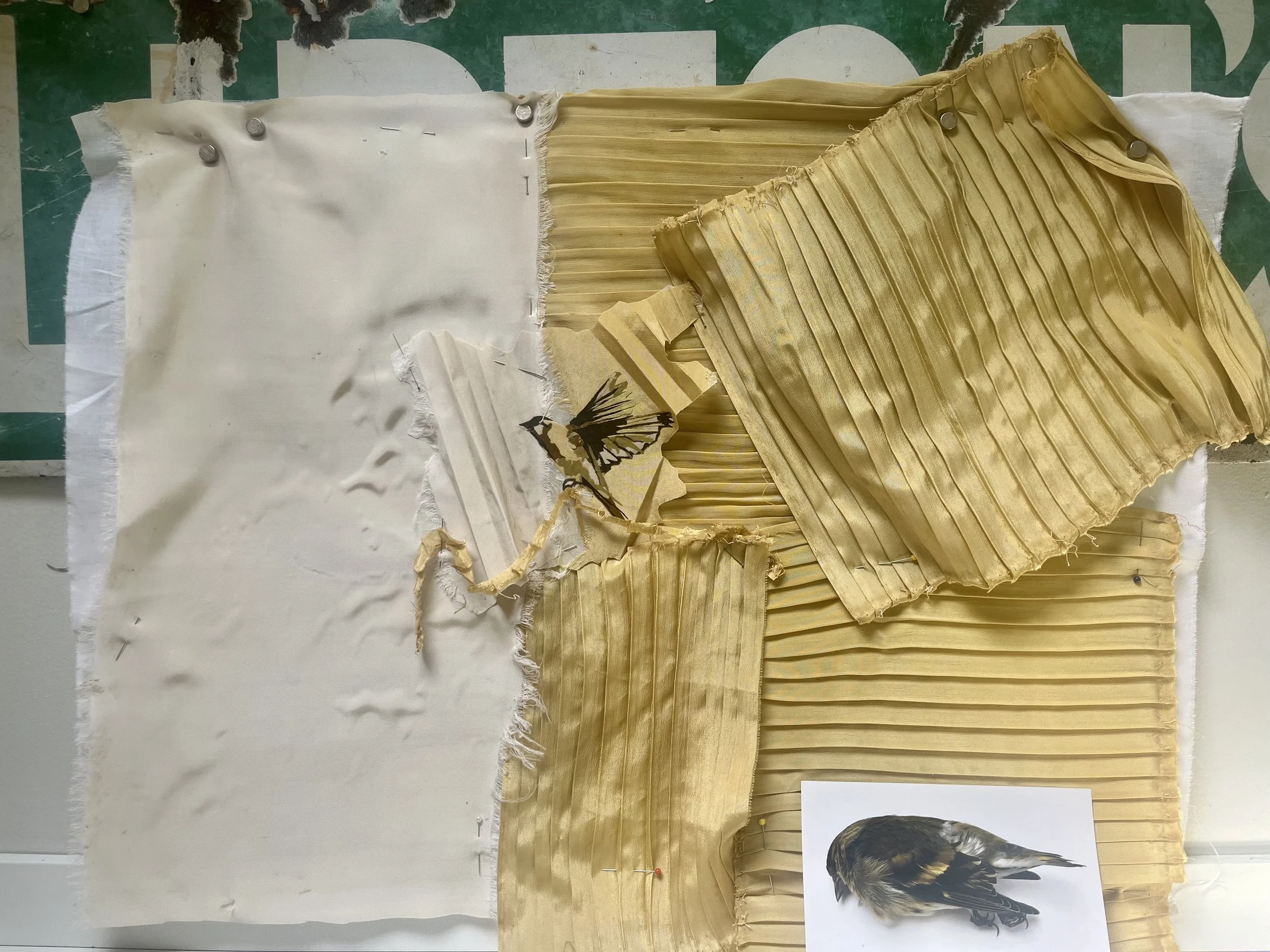
I was struck by how the framing of pillars withing the architecture of this church by prayer desks made landscapes appear. It seemed a fitting metaphor for the way in which we view life and religion, but also resonates with the way I make art. I am now working on the representation of this manifestation through the coloured silk palette I took with me to Venice. Below reference material and Day 1:


I have just got back from a truly inspiring visit to Venice. My intention was to focus on colour. I am not alone! Picture of me in front of a magnificent exhibition by Marco Petrus. He has taken compostitonal and colour references from Italian Renaissance costumes to make these bold, magnificent geometric paintings now on display at Ca’Pesaro Galleria Internazionale d’Arte Moderna The rest, colour reference from the trip.



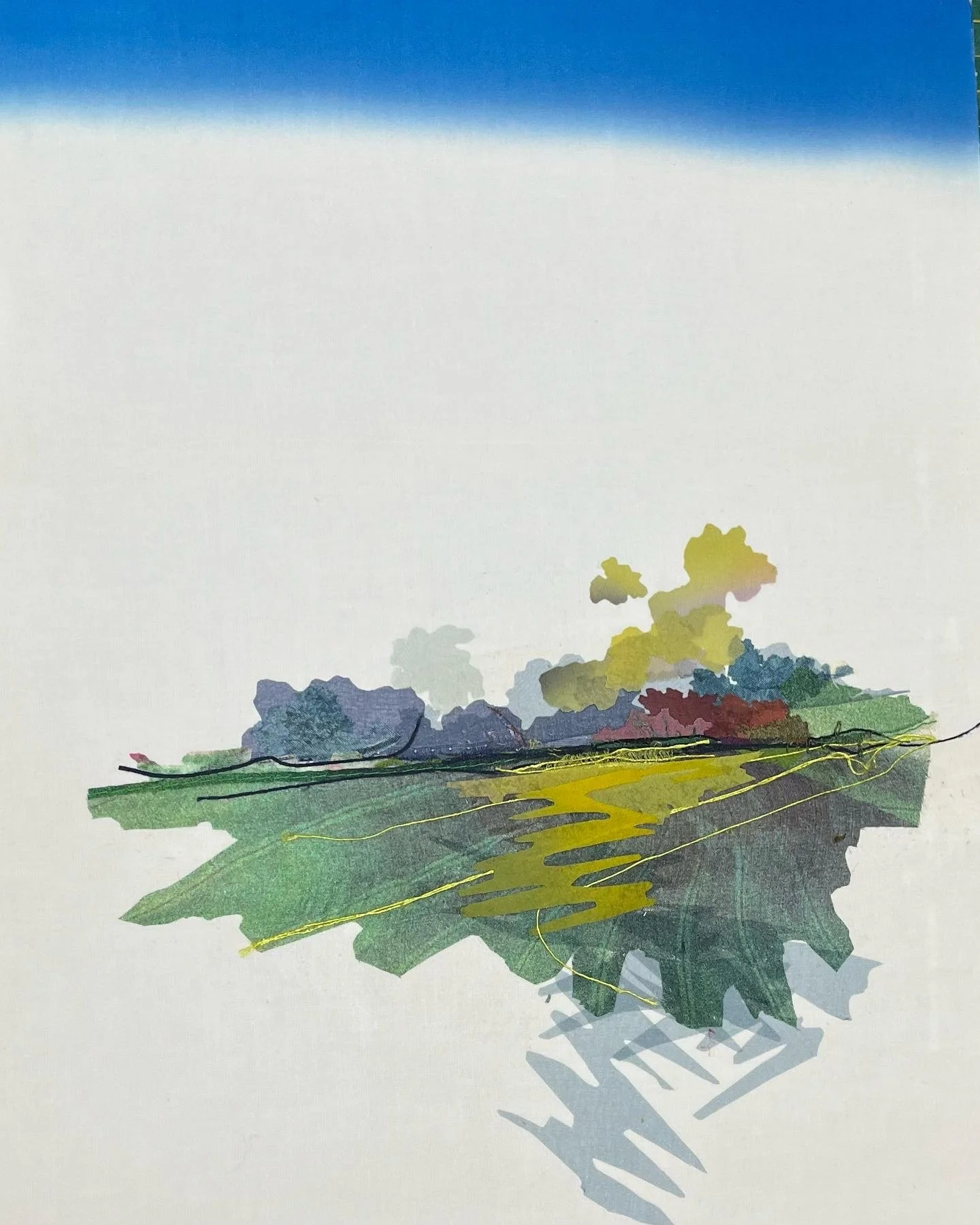
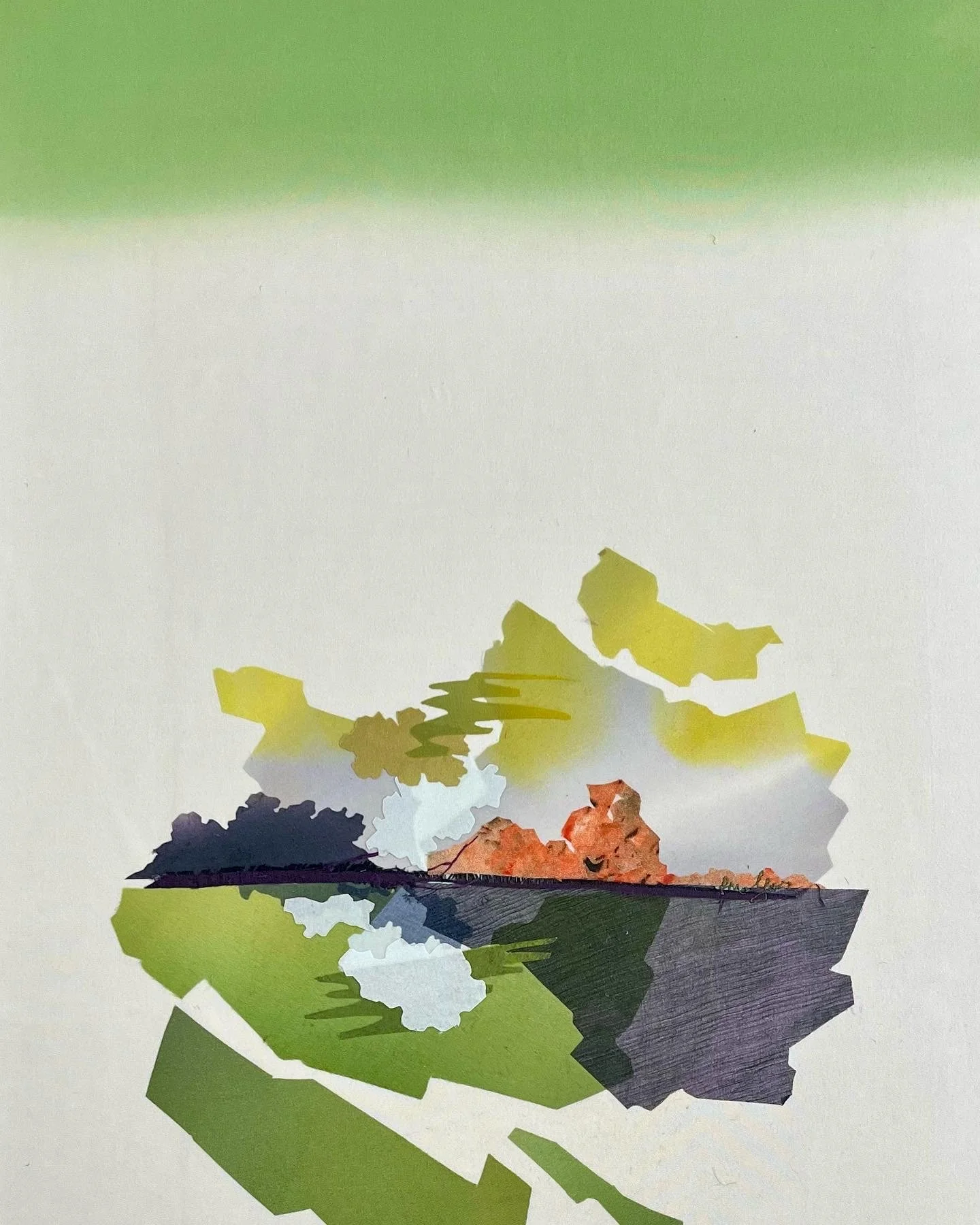
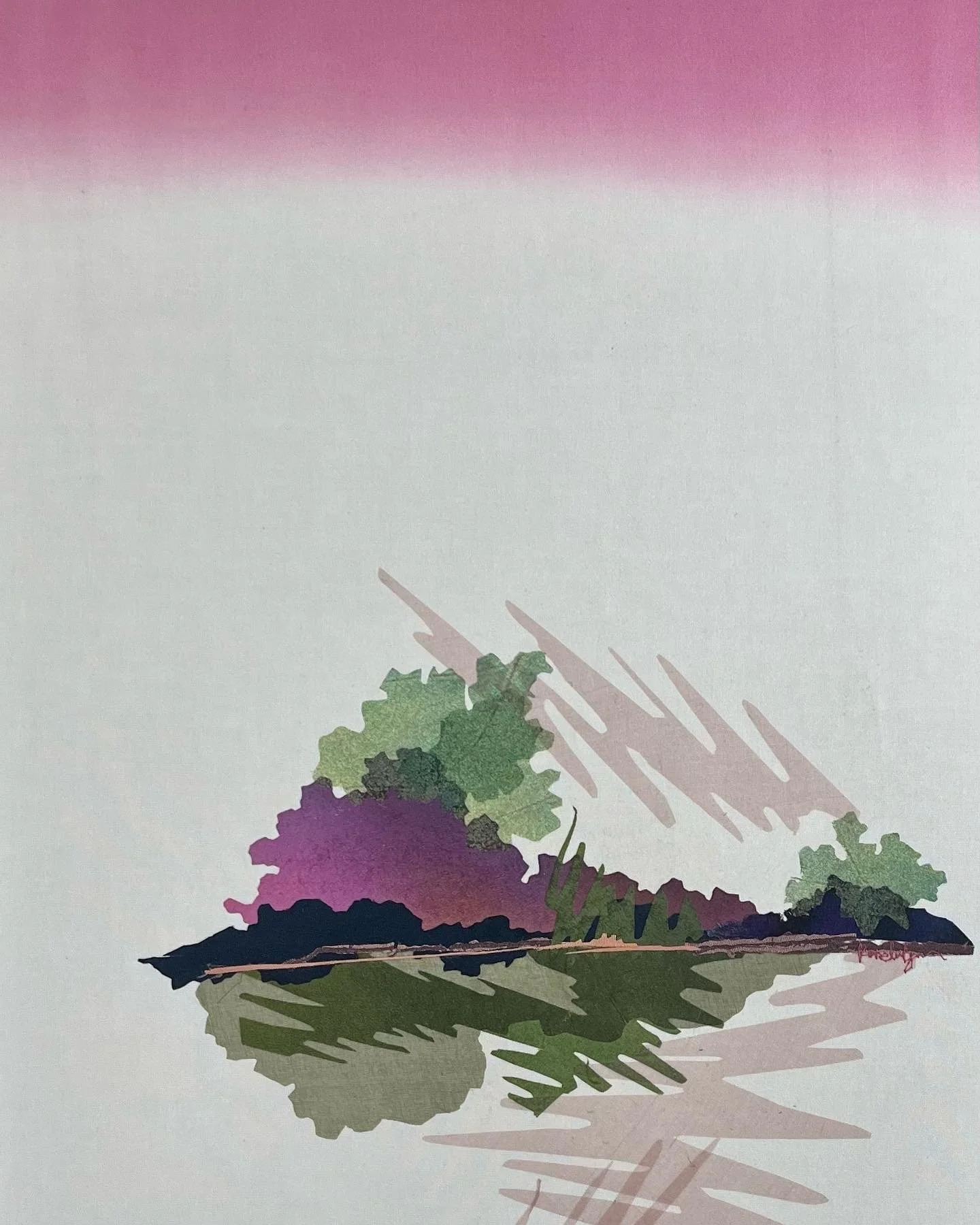
Group show Landscapes at The Cube in London from 29th October -10th November
